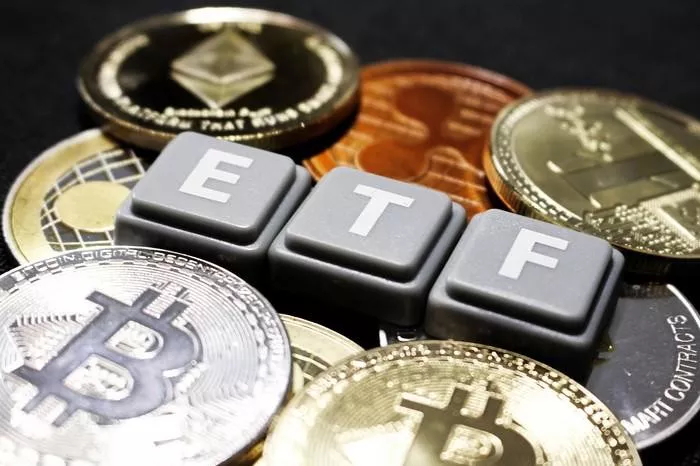In recent years, exchange-traded funds (ETFs) have gained significant popularity among investors. They offer a flexible, cost-effective way to invest in a variety of asset classes. One innovative product that has emerged in the ETF space is the semi-transparent active ETF. This article explores what semi-transparent active ETFs are, how they work, their benefits, and their potential drawbacks.
Understanding ETFs
Before diving into semi-transparent active ETFs, it is essential to understand what traditional ETFs are. ETFs are investment funds that trade on stock exchanges, similar to individual stocks. They typically track an index, a commodity, or a basket of assets. Investors can buy and sell shares of an ETF throughout the trading day at market prices.
The Rise of Active Management
While many ETFs are passively managed, tracking specific indices, there has been a growing interest in active management. Active ETFs seek to outperform a benchmark index by using research, analysis, and investment strategies. Traditional active mutual funds have long dominated this space. However, active ETFs have gained traction due to their transparency, tax efficiency, and lower expense ratios.
What Are Semi-Transparent Active ETFs?
Semi-transparent active ETFs represent a new category of investment products that combine features of active management with the structural advantages of ETFs. Unlike traditional active ETFs, which must disclose their entire portfolio holdings daily, semi-transparent active ETFs provide a unique approach to disclosure.
Disclosure of Holdings
In a semi-transparent active ETF, the fund manager does not disclose the complete portfolio holdings daily. Instead, they provide a “semi-transparent” approach. This means that the fund discloses its holdings on a less frequent basis, such as monthly or quarterly. This allows managers to maintain a level of confidentiality regarding their investment strategies while still providing investors with sufficient information about their investments.
How They Function
Semi-transparent active ETFs operate similarly to traditional ETFs. They are listed on stock exchanges, allowing investors to buy and sell shares throughout the trading day. The price of the ETF fluctuates based on market demand, similar to individual stocks.
The fund managers actively manage the portfolio, making investment decisions based on research and market conditions. They aim to outperform a benchmark index by using various strategies, including stock selection, market timing, and sector rotation.
Benefits of Semi-Transparent Active ETFs
Semi-transparent active ETFs offer several advantages to investors. Understanding these benefits can help investors make informed decisions when considering these investment products.
Flexibility and Liquidity
Like traditional ETFs, semi-transparent active ETFs provide investors with flexibility and liquidity. Investors can buy and sell shares at market prices throughout the trading day. This allows for quick adjustments to portfolios based on market conditions or investment goals.
Lower Costs
Semi-transparent active ETFs typically have lower expense ratios compared to traditional mutual funds. This is due to their ETF structure, which offers tax efficiency and reduced trading costs. Additionally, the semi-transparent nature of these ETFs can help keep operational costs lower for fund managers.
Access to Active Management
Investors seeking active management can benefit from semi-transparent active ETFs. These funds offer exposure to a diverse range of asset classes while allowing fund managers to implement their investment strategies. This active management can lead to potential outperformance compared to passive index-tracking ETFs.
Enhanced Confidentiality
The semi-transparent disclosure model allows fund managers to keep certain aspects of their investment strategies confidential. This can be particularly advantageous in competitive markets where revealing holdings could diminish the effectiveness of their strategies. By not disclosing all holdings daily, managers can avoid front-running and other market distortions.
see also: What is an ETF & Index Fund?
Potential Drawbacks of Semi-Transparent Active ETFs
While semi-transparent active ETFs offer numerous benefits, they also come with potential drawbacks that investors should consider. Understanding these limitations is crucial for making informed investment decisions.
Less Transparency
One of the primary concerns with semi-transparent active ETFs is the reduced level of transparency. Investors may not have access to daily portfolio holdings, making it difficult to assess the fund’s risk exposure and investment strategies. This lack of transparency may not align with the preferences of some investors who prefer knowing their exact holdings.
Potential for Higher Tracking Error
Active management inherently involves risks, and semi-transparent active ETFs may experience higher tracking errors compared to passive ETFs. Tracking error measures the deviation of a fund’s returns from its benchmark. Active managers may take concentrated positions or make significant tactical decisions that could lead to higher volatility in returns.
Limited Historical Data
Since semi-transparent active ETFs are relatively new, there is limited historical performance data available for investors to analyze. This lack of historical context may make it challenging for investors to evaluate the effectiveness of these funds compared to more established investment products.
Regulatory Environment
The introduction of semi-transparent active ETFs has prompted discussions around regulations and compliance. The U.S. Securities and Exchange Commission (SEC) has approved the creation of semi-transparent active ETFs under specific conditions. Fund managers must provide sufficient information to the SEC, ensuring that investors receive essential disclosures while protecting their investment strategies.
Compliance and Investor Protection
Regulatory oversight aims to protect investors by ensuring that semi-transparent active ETFs adhere to industry standards. Fund managers must disclose information about their investment strategies, performance, and risks associated with the funds. This regulatory framework aims to provide a level of investor protection while allowing for the unique structure of semi-transparent active ETFs.
Conclusion
Semi-transparent active ETFs represent an innovative approach to active management in the ETF space. By combining the benefits of active investment strategies with the flexibility and liquidity of ETFs, these funds offer investors a unique opportunity. While they provide advantages such as lower costs, access to active management, and enhanced confidentiality, they also come with potential drawbacks like reduced transparency and tracking error. As this investment product continues to evolve, investors should carefully evaluate their options and consider their investment objectives before diving into semi-transparent active ETFs.
Related topics:


